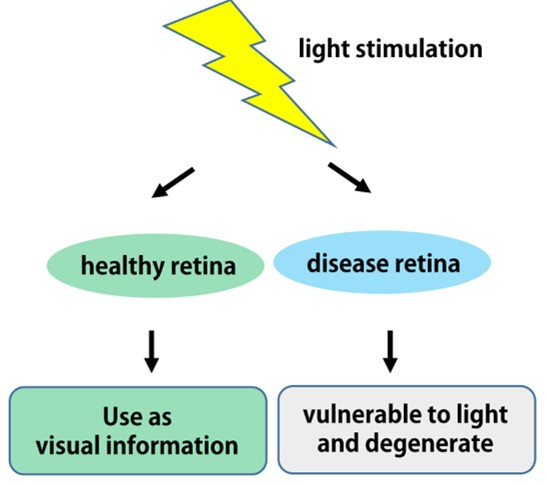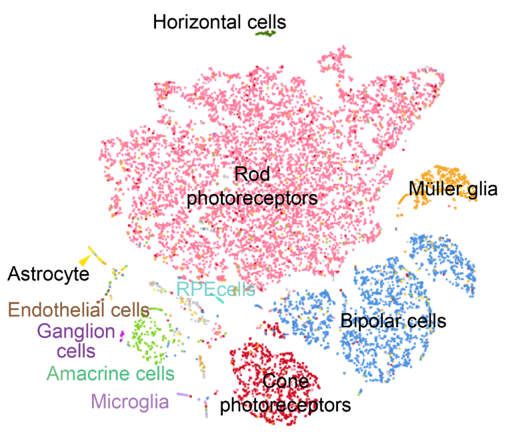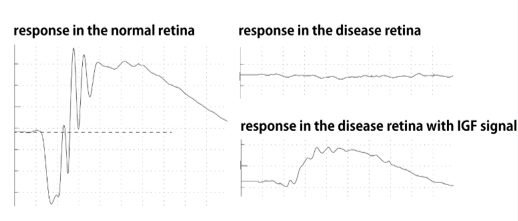Research outcomes
Protecting the eye from light stimuli
Discovery of a novel signalling molecule that ensures the robustness of the retina
Protecting the eye from light stimuli
Discovery of a novel signalling molecule that ensures the robustness of the retina
Summary: A research team of the Nara Institute of Science and Technology, the National Cardiovascular Center, Kwansei Gakuin University, Yamaguchi University and Hokkaido University has discovered a new signalling molecule that prevents the impairment of visual function caused by light stimulation. The research results have recently been published in the journal Cellular and Molecular Life Sciences.
The retina is the first group of cells in the eye to receive visual information from the outside of the body. Retinitis pigmentosa is a disease in which this function is impaired, and is legally assumed as an intractable disease, as no treatment has been established. Previously, the research team showed that this retinal degeneration is caused by light stimulation and identified endothelin as the signal responsible for it. However, while various other signals are thought to be involved, the actual nature of these signals has remained largely unknown.
In this study, Naoya Shigesada, a former PhD student (Developmental Biomedical Science, Division of Biological Science), and colleagues investigated gene expression using a single-cell gene expression analysis method in a mouse model of retinitis pigmentosa. The results showed that the expression of the signalling molecule IGF1 was reduced in some specific cells in the diseased retina, resulting in weakened intracellular glucose metabolism. Moreover, stable expression of IGF1 in retinal cells not only improved metabolism, but also partially suppressed cellular degeneration and improved visual function. This was also confirmed in mutant mice of the mTOR gene, which acts downstream of IGF signalling.
Further studies are awaited to further elucidate the link that exists between multiple signals, such as how endothelin signalling and IGF1 are involved with each other to maintain the robustness of visual system.



(Glossary)
Retinitis pigmentosa: a disease that occurs in the retina of the eyes, about half of which are familial (hereditary).
Single-cell expression analysis: a method for quantifying the gene expression in individual cells in the specific tissue
Endothelin: a peptide released by photoreceptor cells during retinal inflammation, which activates the surrounding glial cells.
Insulin-like growth factor (IGF): a secreted protein involved in cell growth and maintenance of organ function.
(team members)
Naoya Shigesada, Naoya Shikada, Manabu Shirai, Michinori Toriyama, Fumiaki Higashijima, Kazuhiro Kimura, Toru Kondo, Yasumasa Bessho, Takuma Shinozuka and Noriaki Sasai
(journal) Cellular and Molecular Life Sciences
(title) Combination of blockade of endothelin signalling and compensation of IGF1 expression protects the retina from degeneration.
<DOI> https://doi.org/10.1007/s00018-023-05087-x
<URL> https://link.springer.com/article/10.1007/s00018-023-05087-x
(The full text of Dr. Naoya Shigesadsa’s dissertation (written in Japanese) can be found at
https://library.naist.jp/opac/book/108165
Information about the Developmental Biomedical ScienceLaboratory can be found at the following website:
https://bsw3.naist.jp/eng/courses/courses212.html
( January 26, 2024 )
